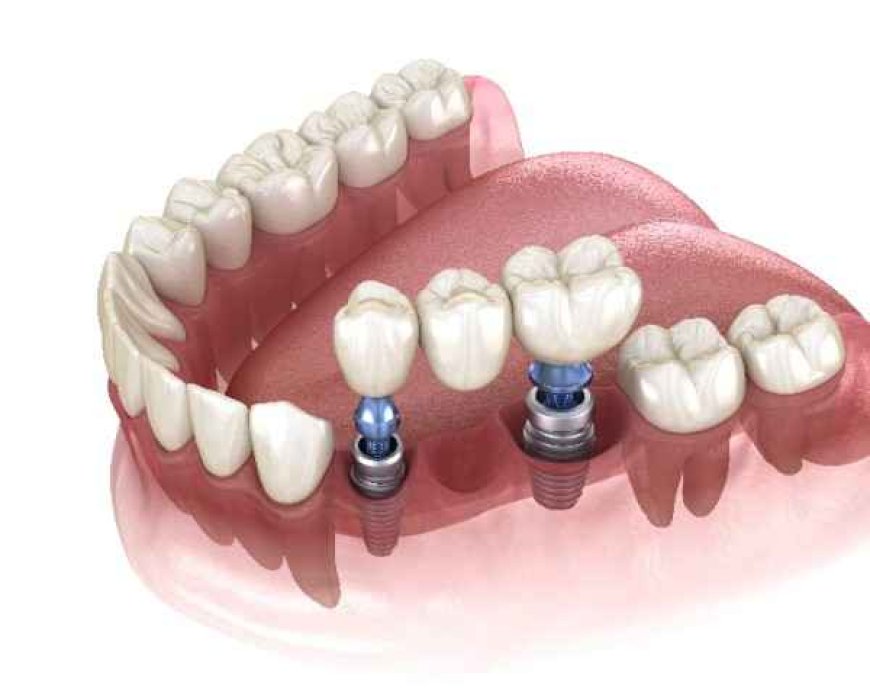Enhancing Implant Outcomes with Strategic Bone Grafting
Get long-term implant results with bone grafting in Cardiff. Restore bone loss from trauma or gum disease and ensure stable, lasting smiles

Dental implants have revolutionised the way we restore missing teeth, providing both long-term function and natural-looking aesthetics. Yet, some patients may not be suitable for immediate implant placement because of insufficient jawbone density. Bone grafting is a vital preparatory step that enhances the success and stability of implants, especially when jawbone density or volume is compromised. Whether the result of trauma, gum disease, or prolonged tooth loss, bone deterioration can affect implant viability.
This blog explores how bone grafting works, when its needed, and the substantial benefits it offers in ensuring implant longevity and overall oral health for patients seeking lasting solutions.
Why Bone Grafting Matters for Implant Success
Osseointegration is the biological process where implants fuse with the jawbone, requiring adequate bone density for long-term success. Without enough bone, implants may loosen or fail. Bone grafting rebuilds the bone, creating a strong foundation for future placement. This essential procedure enables more patients to benefit from full dental restorations with long-lasting results.
Key benefits of bone grafting:
- Improved implant stability
- Better facial structure and aesthetics
- Broader implant eligibility
Common Reasons for Jawbone Loss
Jawbone deterioration may occur due to various reasons. Recognising these causes aids in assessing how essential and urgent bone grafting may be.
|
Cause |
Impact on Bone Health |
|
Tooth loss |
Progressive bone resorption in the empty site |
|
Gum disease |
Loss of bone and soft tissues |
|
Injury or trauma |
Fractures or bone defects |
|
Developmental conditions |
Naturally inadequate bone growth |
Left untreated, these conditions compromise future implant outcomes. Seeking timely intervention from an experienced provider can prevent more complex procedures later on. Anemergency dentist in Cardiffcan also help manage cases of trauma or infection that impact the jawbone's integrity.
Strategic Planning for Grafting Success
Bone grafting isnt just about adding volume; its about creating optimal conditions for a future implant. This means precise planning and diagnostics play a major role. A CBCT scan (3D imaging) is commonly used to assess bone density, map nerve locations, and simulate implant positioning.
The goal is to ensure that implants are well-aligned with strong surrounding bone, offering both mechanical support and aesthetic alignment. Coordinating care between surgical and restorative professionals allows for:
- Tailored grafting based on implant needs
- Minimised surgical complications
- Better control over the final appearance
Healing and Timeline for Integration
Bone grafts dont provide immediate implant readiness. They require time to bond and be gradually replaced by your bodys natural bone.
Typical healing timeline:
- Minor grafts: 3 to 4 months
- Larger augmentations or sinus lifts: 6 to 9 months
In this stage, the body generates new bone around the graft, slowly creating a strong foundation for the implant.
Factors affecting healing:
- General health and immune function
- Smoking or poor oral hygiene
- Type of graft material used
Ongoing care with your provider ensures the graft is healing as expected, and the site is ready for implant placement at the optimal time.
Types of Bone Grafting Materials and Techniques
Dentists may select from several grafting materials depending on the site, volume needed, and patient preferences.
Common graft materials:
- Autografts:Taken from the patients own body, such as the jaw or hip)
- Allografts: Processed human donor bone
- Xenografts: Animal-derived (typically bovine)
- Alloplasts: Synthetic substitutes
Each material comes with unique advantages. For example, autografts offer high biocompatibility, while allografts avoid the need for a second surgical site.
Techniques include:
- Socket preservation: Graft placed at the time of extraction to retain ridge height
- Ridge augmentation: Rebuilding a narrow or collapsed jaw ridge
- Sinus lift: Raising the sinus floor in the upper jaw to allow implant placement
Consulting a specialist indental implant Cardifftreatments ensures that the right technique is chosen for your specific anatomy and long-term goals.
Risks, Aftercare, and Predictability
Bone grafting is a routine and predictable procedure but carries some risk like any surgery. When done under expert care, success rates are high, especially when combined with thorough aftercare.
Common post-operative symptoms:
- Mild discomfort or swelling
- Minor bleeding
- Temporary dietary restrictions
Essential aftercare tips:
- Avoid vigorous rinsing or brushing near the site
- Take prescribed antibiotics or pain relief
- Refrain from smoking, which hinders healing
- Eat soft, nutritious foods to support recovery
An emergency dentist in Cardiff should be contacted if severe swelling, pain, or unusual discharge occurs post-surgery.
Cost Considerations and Value of Bone Grafting
While clinical benefits often take the spotlight, understanding the financial aspect of bone grafting is equally important. The price of a bone graft depends on factors like the material used, the procedures complexity, and any extra treatments like sinus lifts. While it might appear to be an extra cost, bone grafting is a valuable investment in the long-term success of your implant and your overall dental health.
Factors Influencing Cost and Value:
- Material Type:Autografts may be more expensive due to surgical harvesting, whereas synthetic grafts are typically more cost-effective.
- Complexity of Procedure:More advanced grafts (e.g., sinus lifts) can increase costs due to additional time and equipment.
- Long-Term Savings:By preventing implant failure, grafting helps avoid the cost of corrective treatments later.
- Insurance and Financing:Many practices offer payment plans or partial insurance coverage for medically necessary grafting.
Informed discussions with your dental provider can help plan both clinically and financially.
Long-Term Benefits of Strategic Bone Grafting
Bone grafting isnt merely a stop-gap; its a long-term investment in your oral health and function.
Benefits include:
- Increased implant success rates
- Preservation of jawbone and facial contour
- Reduced need for future invasive procedures
- Better integration with surrounding natural teeth
Patients who undergo grafting as part of their dental implant journey often experience higher satisfaction and fewer complications in the years following treatment.
Conclusion
Bone grafting isn't merely a preparatory step, it's the cornerstone of successful implant treatment. It allows for safe, secure, and long-lasting dental restorations that both function and look natural. For those considering implants but concerned about bone loss, the right grafting approach can make all the difference.
If youre exploring your options for dental implants or facing a sudden oral health issue, professional guidance is essential. At Cardiff, we provide tailored, evidence-based solutions to help every patient achieve their ideal smile with the confidence of structural support and aesthetic harmony.

































